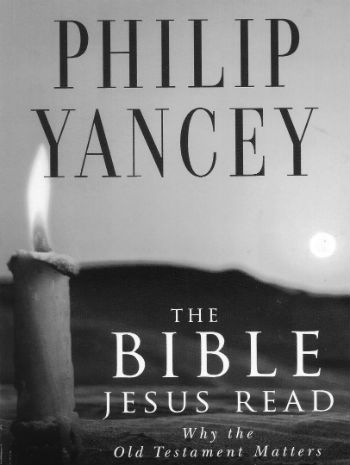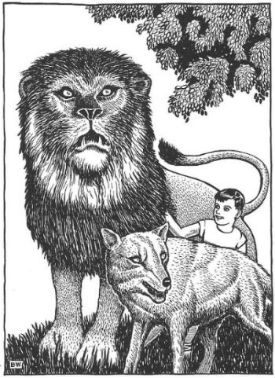Philip Yancey: Three Dimensions of Biblical Prophecy
By Neil Earle

Bible prophecy certainly has got lots of churches and ministries in trouble across the centuries, ours included. That’s why it’s always refreshing to come across a reliable source that can shed some light on this enigmatic part of the Scriptures.
This past year our church Book Club has been reading The Bible I Never Knew by Philip Yancey. In his section on the Old Testament prophets Yancey outlined one of the key hurdles in understanding these massively important books. He shows there are three dimensions as to how the prophets perceived the time-frame of their messages and how the Holy Spirit later shaped their messages to be ahead of their times. This is found on page 182 of Yancey’s text and the three timeline views are messages based on
- Now
- Later
- Much Later
Let’s explain. Yancey starts with Isaiah 13 which is an apocalyptic chapter if ever there is one, usually cited by students of the prophets as “definitely” labeled for the end times. It is a “Burden against Babylon” and has all the requisite elements for an end of the world scenario. There is the serious judgment on Babylon, then the rising power. Thus we meet “the Day of the Lord” an ominous phrase if ever there is one (v. 6, 9). There are heavenly signs and scary alterations in the astronomical and geological order (v. 10-13). Children are being dashed to pieces. It sure seems like a message for what preachers call the End Time.
 Isaiah gave beautiful prophecies that most agree were to be fuflilled Much Later. (Basil Wolverton artwork)
Isaiah gave beautiful prophecies that most agree were to be fuflilled Much Later. (Basil Wolverton artwork)Prophecy’s Fail-Safe System
But as Yancey says, maybe Isaiah did think the fall of Babylon to the Medes (v. 17) would usher in the end of the world. “Probably the prophets did not know a timetable – after all Jesus admitted ignorance of God’s schedule while he lived on earth.”
This is a good point. St. Paul said church prophecy was imperfect (1 Corinthians 13). Sometimes nations repent and that averts the doom that was prophesied as did Nineveh in the Book of Jonah. As Jeremiah said, God is watchful over his word as the Holy Spirit sifts the nations to see how they respond – a fail-safe system built into the prophecies (Jeremiah 1:11-12 – “watch or wake tree” mentioned). So a loving and just God has to build in this repentance possibility.
Isaiah’s references to Arabs not pitching tents in destroyed Babylon’s ruins shows the prophet has more than the NOW, the immediate future in view. Life will go on but not for Babylon the Great.
Another factor here Yancey doesn’t mention is the descriptive and colorful language of the prophets. They were master communicators. Just like Jesus’ fast-moving Olivet Prophecy in Matthew 24, the text is exceedingly gripping. It looks like it is happening right before your eyes. Isaiah 13 is like that. The language is so colorful and descriptive and blood-curdling that one can read it indeed as the end of everything. “I will shake the heavens and the earth will move out of its place” (Isaiah 13:13). However we know Babylon fell in 539 BC. The end did not come in 539 BC and Isaiah was vindicated as a prophet with a “Now” Later message.
 Prophecy teachers keep missing the mark, caution is needed.
Prophecy teachers keep missing the mark, caution is needed.
Similarly Joel’s prophecy triggered by a locust plague devastating Judah in his time skips ahead to predicting a gathering of the nations for a final judgment (Much Later?) and the wonderful announcement of the coming of the Holy Spirit upon all flesh in Joel 3 seems for Later. As Yancey summarizes:
“Biblical scholars have names for this characteristic of the prophets: double or triple fulfillment…To interpret the scene the viewer must separate these various elements and reconstruct them in a way that makes visual sense”
Handle with Care
So to separate out Now, Later, Much Later takes some care and skill. The Immanuel Prophecy of Jesus’ birth in Isaiah 7 is on the same level. But the context of Isaiah 7 is crucial. Reading in full shows Isaiah was offering a sign to cowardly King Ahaz who was scheming to deliver Jerusalem by his own wiles. God offers him a sign: the virgin will bear a son. He self-righteously refuses to heed the prophet. Isaiah counters with: God will give you a sign – Isaiah’s own wife will bear a son given the ominous name Maher-Shalal-Hash-Baz (Isaiah 8:1) meaning “trouble is coming soon” (very roughly).
The prophecy thus had meaning for the time of Ahaz and Isaiah (Now) but it would be fulfilled much later in a more significant way through Mary and Jesus, 700 years later. As Yancey says: “Almost all predictions had meaning for the original hearers as well as for us thousands of years later.” Why? “To demonstrate that history would be determined by the future – God’s future – and not by the present reality of suffering, chaos and political upheaval. But in order to believe in such a lofty vision, that audience needed temporal evidence.”
And they got it through Isaiah’s family.
 These two dictators were highly dubbed as the Beast of Revelation in their day and they did set a style reminiscent of Revelation 17.
These two dictators were highly dubbed as the Beast of Revelation in their day and they did set a style reminiscent of Revelation 17.A God Outside Time
The triple dynamic of Now, Later, Much Later admittedly seems confusing to those of us in a world of technology and twitter where things must make sense in a nanosecond or people move on, but Yancey has an explanation for this. It is rooted in Gods nature as an utterly out-of-this world being who has to intrude into time to get his message out.
“As seers, the prophets have insight into God’s perspective,” writes Yancey, “and for a God who lives outside the constraints of time, sequence is a minor issue. Paul added that God also chose his servants before the creation of the world (Ephesians 1:4)…Long before Einstein’s theory of the relativity of time and space, the New Testament writers established some truths as, quite literally, timeless. God, a timeless reality, enters our time-bound history as an artist would enter his own painting, suggests C.S. Lewis.”
That is a most helpful insight. As Yancey concludes, “incursions into time by a timeless being would have overtones that reverberate in Isaiah’s day, and Mary’s, and also our own. The prophesied birth of a child during the reign of King Ahaz confirmed Isaiah’s predictive ability and thus gave evidence that Isaiah’s other exalted prophecies of Wonderful Counselor, Mighty God, Everlasting Father, Prince of peace would come to pass.”
And something else is at work here that Yancey grasped. “Isaiah did not give a time frame for the final fulfillment of his prophecies for in all probability he did not understand such a time frame.” True. We see the prophet Daniel admitting this very thing (Daniel 12:8). See also 1 Peter 1:12.
This shows how we can hold three different time frames in tension without destroying the integrity of the Biblical text. The triple-action scheme makes the prophecies more wonderful and complex and shows how we must not rush in where angels fear to tread. As Yancey concludes:
“The prophets spoke to a world spinning out of control…and God seemed silent, hidden and even powerless. The prophets project forward in time when God will break his silence…God will move in forcefully to recreate heaven and earth.” And that is the ultimate theme of all the prophecies: through the man Jesus Christ God will bring everything back to peace and order in his good time, probably Much Later. And that is why the prophecies are ultimately good news. In fact the best news you can hear beyond the chaos and confusion of today.